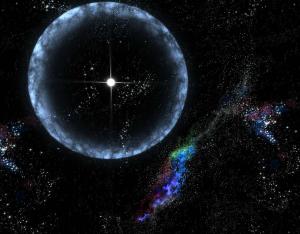June 26 (UPI) — Scientists have developed new models to estimate the size of neutron stars.
The models, powered by gravitational wave data, helped astrophysicists establish new more precise upper limits to neutron star size estimates.
Neutron stars are some of the densest objects in the universe, with a mass greater than our sun squeezed into an area roughly the size of a major city.
But are they more like the size of a sprawling Los Angeles, or the more compact San Francisco? Until now, the precise dimensions of neutron stars have remained beyond the grasp of scientists.
Researchers have now, however, developed a new formula for estimating the size of neutron stars, doing so by analyzing the gravitational waves produced by merging neutron stars.
At a certain point, neutron stars become so dense that they collapse and become black holes, but scientists have struggled to pinpoint this threshold. To narrow the size limits of neutron stars, researchers compared the predictions of two billion theoretical models of neutron stars.
Scientists constrained the models with parameters observed in the gravitational waves generated by a neutron star merger called GW170817.
“By exploring the results for all possible values of the parameters, we can effectively reduce our uncertainties,” Luciano Rezzolla, a researcher with the Institute for Theoretical Physics at the Goethe University Frankfurt in Germany, said in a news release.
The results, detailed in the journal Physical Review Letters, suggests neutron stars boast a diameter between 12 and 13.5 kilometers, or 7.4 and 8.4 miles.
“However, there is a twist to all this, as neutron stars can have twin solutions,” Goeth professor Juergen Schaffner-Bielich said.
A phase transition at even greater densities could cause ultra-dense neutron stars to exist at even smaller dimensions.

COMMENTS
Please let us know if you're having issues with commenting.